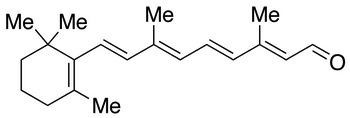Cookie preferences
This website uses cookies, which are necessary for the technical operation of the website and are always set. Other cookies, which increase the comfort when using this website, are used for direct advertising or to facilitate interaction with other websites and social networks, are only set with your consent.
Configuration
Technically required
These cookies are necessary for the basic functions of the shop.
"Allow all cookies" cookie
"Decline all cookies" cookie
CSRF token
Cookie preferences
Currency change
Customer-specific caching
FACT-Finder tracking
Individual prices
Selected shop
Session
Comfort functions
These cookies are used to make the shopping experience even more appealing, for example for the recognition of the visitor.
Note
Show the facebook fanpage in the right blod sidebar
Statistics & Tracking
Affiliate program
Conversion and usertracking via Google Tag Manager
Track device being used

| Item number | Size | Datasheet | Manual | SDS | Delivery time | Quantity | Price |
|---|---|---|---|---|---|---|---|
| R1659-04.250 | 250 mg | - | - |
3 - 19 business days* |
418.00€
|
||
| R1659-04.1 | 1 g | - | - |
3 - 19 business days* |
720.00€
|
If you have any questions, please use our Contact Form.
You can also order by e-mail: info@biomol.com
Larger quantity required? Request bulk
You can also order by e-mail: info@biomol.com
Larger quantity required? Request bulk
Corotenoid component of the visual pigments. All-trans retinal is converted to retinoic acid in... more
Product information "all-trans Retinal (Vitamin A Aldehyde, Retinene)"
Corotenoid component of the visual pigments. All-trans retinal is converted to retinoic acid in vivo by the action of retinal dehydrogenase. Retinal is also known as retinaldehyde. It was originally called retinene,[2] and renamed[3] after it was discovered to be vitamin A aldehyde.[4][5] Retinal is one of the many forms of vitamin A (the number of which varies from species to species). Retinal is a polyene chromophore, bound to proteins called opsins, and is the chemical basis of animal vision. Retinal allows certain microorganisms to convert light into metabolic energy. , Vertebrate animals ingest retinal directly from meat, or they produce retinal from carotenoids, either from one of two carotenes (alpha-carotene, beta-carotene) or from beta-cryptoxanthin, a type of xanthophyll. These carotenoids must be obtained from plants or other photosynthetic organisms. No other carotenoids can be converted by animals to retinal, and some carnivores cannot convert any carotenoids at all. The other main forms of vitamin A, retinol, and a partially active form, retinoic acid, may both be produced from retinal. Invertebrates such as insects and squid use hydroxylated forms of retinal in their visual systems, which derive from conversion from other xanthophylls. , Melting Point: , 60-63ºC, Solubility: Chloroform (Slightly), Methanol (Slightly), Atmosphere: Inert Gas, Method for Determining Identity: Proton NMR (CDCl3) Spectroscopic analysis and Mass Spectrometric analysis, TLC Conditions: SiO2, Hexane: Ethyl Acetate, 8:2, Visualized with UV, AMCS, and Naked Eye, Rf=0.55, Storage and Stability: Aliquot to avoid repeated freezing and thawing and store at -70°C. Aliquots are stable for 6 months after receipt. For maximum recovery of product, centrifuge the original vial after thawing and prior to removing the cap. Light and temperature sensitive. Store under inert atmosphere. Important Note: This product as supplied is intended for research use only, not for use in human, therapeutic or diagnostic applications without the expressed written authorization of United States Biological. Toxicity and Hazards: All products should be handled by qualified personnel only, trained in laboratory procedures.
| Supplier: | United States Biological |
| Supplier-Nr: | R1659-04 |
Properties
| Application: | Ligand, Photosensitizer |
| MW: | 284,44 D |
| Formula: | C20H28O |
Database Information
| CAS : | 116-31-4| Matching products |
Handling & Safety
| Storage: | -80°C |
| Shipping: | +20°C (International: -80°C) |
| Signal Word: | Warning |
| GHS Hazard Pictograms: |
|
| H Phrases: | H302, H315 |
Caution
Our products are for laboratory research use only: Not for administration to humans!
Our products are for laboratory research use only: Not for administration to humans!
Information about the product reference will follow.
more
You will get a certificate here
Viewed


